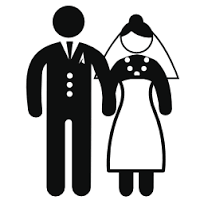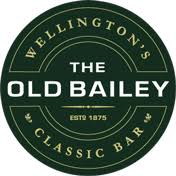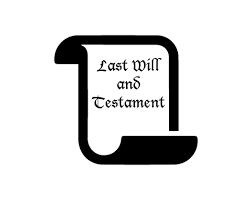All Saints, North Street, York, , Yorkshire, England
Wikipedia links for
All Saints, North Street, York, , Yorkshire, England
[All Saints] [North Street] [York] [] [Yorkshire] [England]
Notes:
The first reference to a church of All Saints in North Street is in 1089, when the patronage of the rectory was granted by a layman, Ralph Paganell, to the Benedictine Priory of the Holy Trinity he had refounded nearby in Micklegate. That a rectory was established at such an early date indicates that a church existed on the site before the Norman Conquest. This early building was probably a simple rectangular structure, which fitted into the central space between the east end of the present chancel and the western aisle of the nave.
As the population on this bank of the Ouse expanded at the end of the 12th-century, an aisle was added to the church. This incorporated fragments of Roman gritstone columns found on the site. In the early 13th century the chancel was reconstructed in the Early English style (receiving an internal decorative arcade), and a second aisle was added, with capitals adorned with the distinctive nailhead decoration of the period. In the first half of the 14th century, as the urban elite of the city began to build their large houses in the parish, the east end was sumptuously rebuilt. The present east windows with Geometric and Curvilinear tracery of the Decorated period of Gothic architecture were installed and the side aisles were extended east to be level with the east wall of the chancel.
The church took on its present form in the late 14th century when the tower and spire were erected, the nave extended and the arcades reconstructed. It is possible that almost the whole of the old church was demolished, leaving only the easternmost bays standing in order that mass might continue at the altars. The tower, octagon and 120 foot spire were the first part of the new work to be constructed, this was underway in 1394 when Richard Byrd gave money in his will to the new fabric. The rest of the building must have been all but complete by about 1410 when work began on glazing the north and south walls (see below). The modest way the arcades were rebuilt, using old material and with minimum detail, suggests that by the 15th century, after the extravagance of the tower and spire, the amount of money available for the work was restricted. In the 1440s the roof was still not complete and although bequests of tiles and lead were made in order that work might proceed 'within a few years' the work was only completed in the 1470s when the lavish ceilings over the chancel and aisles were installed.
By the end of the Middle Ages in addition to the 'high' altar in the chancel, there were at least four and possibly five other altars in the church. We know that one was dedicated to the Blessed Virgin Mary and was situated in the north 'Lady choir,' where a statue of her was also kept. The altar of St Nicholas was situated in the south choir aisle known as the 'choir of St Nicholas and St Katherine', and two further altars of St Thomas the Martyr and St James the Great, stood in the north and south nave aisles. In addition to these altars there were also a number of lights burning before images. In the early 15th century there was a light before 'our Lady', a 'St Crux' or holy cross light before the rood and a light at the Easter Sepulchre on the north side of the chancel. There may have been as many as eight chantries established at the altars to say mass for the souls of deceased benefactors of the church. We have details of only a few. The earliest was founded in 1324 by John Benge at the altar of our Lady. Two more were founded in 1410, one by William Vescy at the altar of St Thomas the Matryr, and the second by Adam del Bank and John Bawtrie at the altar of St Nicholas. In the early 16th century a number of chantries including that of the Bolton family at the altar of our Lady were amalgamated. Each altar and chantry was individually endowed with all the plate and vestments necessary for a priest to sing mass. William Vescy gave to his chantry two silver vessels to make a chalice and a length of linen cloth to make albs, amices and other vestments. These basics were constantly being augmented through bequests. In the 1455 will of Sir John Cliff, chaplain of Benge's chantry, he gave to his altar 'a red vestment of cloth of gold', and to the altar of St James 'a grey vestment with black orphreys (strips of embroidery) worked with gold, another with red orphreys worked with garters, and all his altar apparel'. The chantries provided All Saints with a clerical staff as large as some of the great collegiate churches. In the early 15th century there were at least three chantry priests, who along with the rector and his assistant the parochial chaplain, ensured that there was a constant supply of masses throughout the day.
The Reformation had an immense impact on All Saints. The multiple altars and their ornamentation were gradually swept away under the reforming legislation of Edward VI and Elizabeth I. The interior was altered beyond recognition, the open spaces in the aisles and choirs being filled with box-pews and the high altar replaced by a railed communion table. The focus of the church shifted from sacrament to word, and from 1675 the present pulpit, part of a double-decker, dominated the interior. The work of maintaining and beautifying the fabric continued as before. In 1695 John Etty constructed a new altarpiece and Mr Graime was paid for 'painting a dove' [the Holy Ghost?] on it. With the medieval altars went the large staff of priests that served them. By the end of the 16th century All Saints was served by a basic provision of rector and lay parish clerk. The living was always poorly endowed, and as early as 1548 there was a plan to amalgamate the parish with that of St John Ousegate and to demolish All Saints. The maintenance of the church fabric and the poor of the parish were supported by charities that generated income from local properties. Some of these properties, including the 15th century row called All Saints cottages, which face the north wall of the church, had probably supported chantries before the Reformation. The income from property was augmented through bequests: Ann Orfeur in 1790 and Dorothy Bowes in 1794 left £100 each to be invested to provide coals for the poor.
 Church : Latitude: 53.9598304, Longitude: -1.0823783
Church : Latitude: 53.9598304, Longitude: -1.0823783Matches 1 to 8 of 8
| Last Name, Given Name(s) |
Christening |
Person ID | ||
|---|---|---|---|---|
| 1 | 7 Nov 1858 | All Saints, North Street, York, , Yorkshire, England | I11773 | |
| 2 | 19 Aug 1860 | All Saints, North Street, York, , Yorkshire, England | I11775 | |
| 3 | 19 Aug 1860 | All Saints, North Street, York, , Yorkshire, England | I11774 | |
| 4 | 11 Dec 1872 | All Saints, North Street, York, , Yorkshire, England | I66120 | |
| 5 | 29 Aug 1843 | All Saints, North Street, York, , Yorkshire, England | I11767 | |
| 6 | 29 Aug 1843 | All Saints, North Street, York, , Yorkshire, England | I11768 | |
| 7 | 13 Apr 1845 | All Saints, North Street, York, , Yorkshire, England | I11769 | |
| 8 | 5 Sep 1869 | All Saints, North Street, York, , Yorkshire, England | I74707 | |
Matches 1 to 4 of 4
| Last Name, Given Name(s) |
Burial |
Person ID | ||
|---|---|---|---|---|
| 1 | 17 Mar 1844 | All Saints, North Street, York, , Yorkshire, England | I11767 | |
| 2 | 23 Jun 1847 | All Saints, North Street, York, , Yorkshire, England | I11765 | |
| 3 | 28 Apr 1844 | All Saints, North Street, York, , Yorkshire, England | I11768 | |
| 4 | 11 Apr 1847 | All Saints, North Street, York, , Yorkshire, England | I11769 | |
Matches 1 to 3 of 3
| Family |
Marriage |
Family ID | ||
|---|---|---|---|---|
| 1 | Ellis / Waudby | 13 Dec 1900 | All Saints, North Street, York, , Yorkshire, England | F26251 |
| 2 | Ketelstrings / Maw | 13 Aug 1693 | All Saints, North Street, York, , Yorkshire, England | F24931 |
| 3 | Waudby / Rochester | 12 Feb 1898 | All Saints, North Street, York, , Yorkshire, England | F26261 |


















